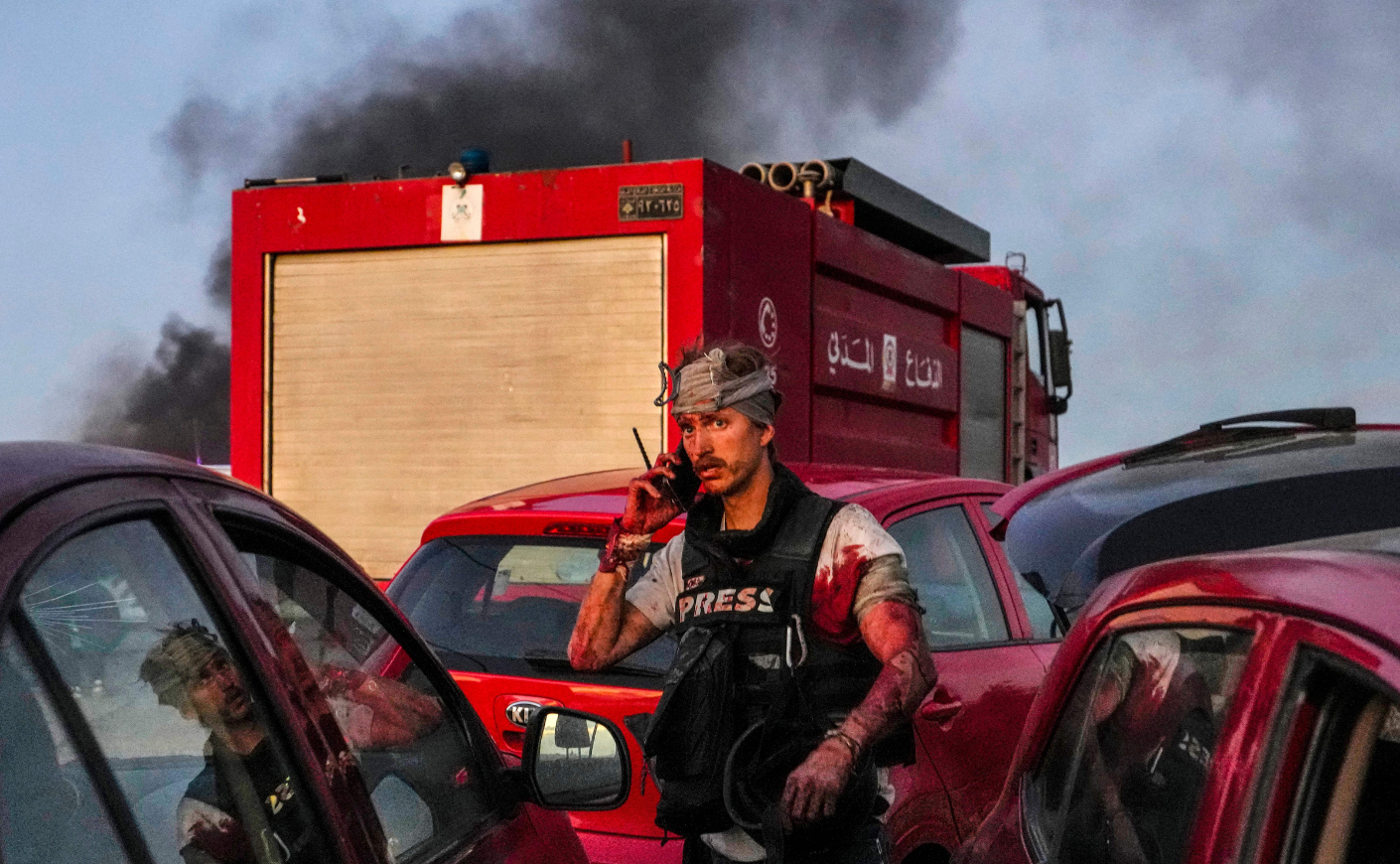The war between Israel and Hamas has been heartbreakingly painful for the families whose loved ones have been kidnapped or killed and those facing the struggles of the resulting humanitarian crisis. Even those who watch with concern from thousands of miles away can face severe mental stress. But the reason we know about what's happening in the region with such intimate detail is the work of courageous journalists who are consistently putting their own lives at risk.
With a conflict so controversial — and so fraught with misinformation — trustworthy reporting is absolutely essential. Bringing such difficult news to the world requires navigating grave danger on a regular basis, and in the weeks since the conflict flared up with Hamas's Oct. 7 attack, 27 journalists have been confirmed dead, with eight more injured and another eight reported missing or detained, according to data from the Committee to Protect Journalists.
To learn more about the heavy burden on members of the media in the Middle East, we caught up with Lucy Westcott, the director of CPJ’s Emergencies Department.
Katie Couric Media: What are the latest statistics about journalists who have been harmed since the Oct. 7 attack on Israel, and what’s involved in CPJ's work to track and confirm these incidents on a rolling basis?
Lucy Westcott: CPJ’s most recent tally, from Thursday, Oct. 26, is that we’re investigating the deaths of at least 27 journalists — 22 Palestinian, 4 Israeli, and 1 Lebanese. This has been the deadliest two-week period for journalists since CPJ began tracking in 1992, and it is unprecedented.
CPJ has a dedicated team researching and reporting on the killings, injuries, and detentions of journalists covering these conflicts, and we’re publishing a daily update of these figures. We’re in direct touch with journalists inside of Gaza and others reporting on the war; when we learn of a journalist who has been injured, killed, or harmed, we confirm the report with two sources before publishing on our website. We then share our latest figures so the wider world can understand the risks that come with reporting on the conflict right now.
For readers who may not understand what wartime coverage is like, what are these brave reporters facing in the field?
Journalists are facing a number of physical threats while reporting on this conflict. Since Oct. 7, CPJ has reported on journalists killed by airstrikes, journalists arrested and detained, journalists threatened while reporting, and journalists assaulted. We are concerned about censorship, and a proposal from Israeli officials to potentially ban news outlet Al Jazeera. We are also investigating reports of up to 48 media offices damaged or destroyed in Gaza.
Visual journalists, including photojournalists, face a particularly high level of risk. Their work requires them to be on the frontlines, and they’re conspicuous, with often large camera equipment in tow. Many journalists, especially freelance journalists, lack the traditional support of a newsroom, so physical threats also come from a lack of available safety equipment.
How does working in a war zone affect journalists' mental health?
The emotional toll is heavy. Local journalists in Gaza in particular are bearing the brunt of the violence from this war: They're living through the conflict and trying to protect themselves and their families, all while continuing to report the news. Their friends and families are being killed. We know what's happening in Gaza because of the journalists who live there, and who are at risk every day.
Journalists working in war zones are also exposed to death, violence, and distress while reporting, and are often themselves in harm’s way, facing great risk to their safety in order to bring us the news. They bear witness and speak with survivors of violence, and people facing the worst experiences of their lives. This can and does take a mental toll on journalists, sometimes not until much later.
What kind of support does CPJ offer journalists during emergencies like this one?
We’re currently able to provide guidance for journalists looking for physical or digital safety advice connected to their reporting, as well as other types of information on how they can keep themselves safe. This is part of CPJ’s journalist assistance program, which can provide small emergency grants on a case-by-case basis to journalists who have been injured or harmed in the course of their reporting. CPJ also provides the crucial role of documenting journalist safety and press freedom violations during these emergencies.
Why is it so crucial for reporters to be on the ground in this environment, despite the dangers of doing so?
During times of conflict and crisis, it’s vital that the public has access to a free press that can safely report on events as they happen. In fluid, ever-changing, and incredibly dangerous situations like this, journalists provide the crucial and sometimes life-saving role of getting timely and factual information to the public.
What can news consumers do to support journalists' safety right now?
You can share CPJ’s reporting and daily updates on the threats to journalists covering this conflict — and remind your networks and communities that journalists are civilians who are protected under humanitarian law.









